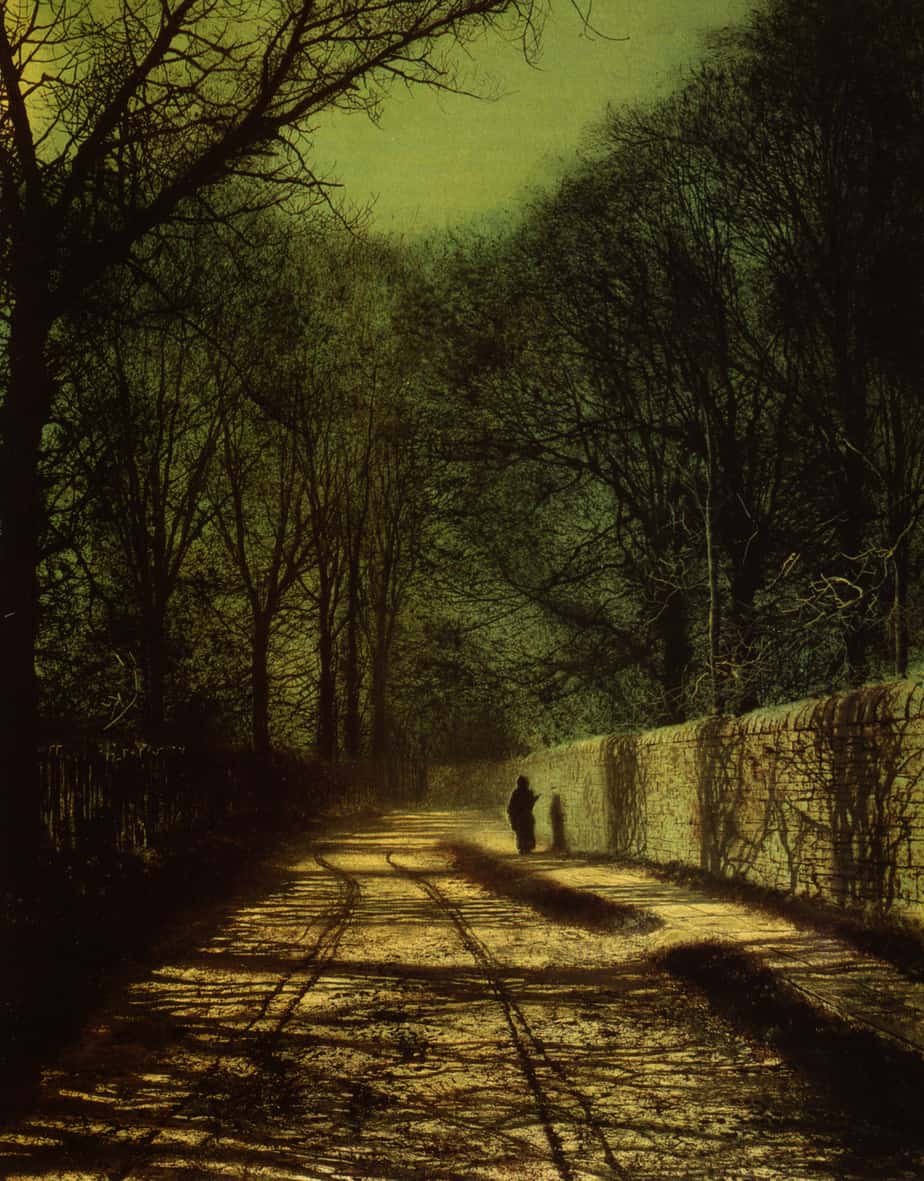As described by James Wood in How Fiction Works, the flâneur is
the loafer, usually a young man, who walks the streets with no great urgency, seeing, looking, reflecting.
Flânerie describes aimless behaviour. In French it’s spelt like this: flâneur.
Wood also uses the great phrases ‘porous scout‘ and ‘Noah’s dove‘ to describe this authorial stand-in. These characters are focalisers.
A BRIEF HISTORY OF THE FLANEUR
The flâneur comes straight out of Romantic poetry. The poet of Wordsworth’s Prelude (began in 1798) is the classic Romantic flâneur. Poet Charles Baudelaire (1821–1867) also created flâneurs in his poetry.
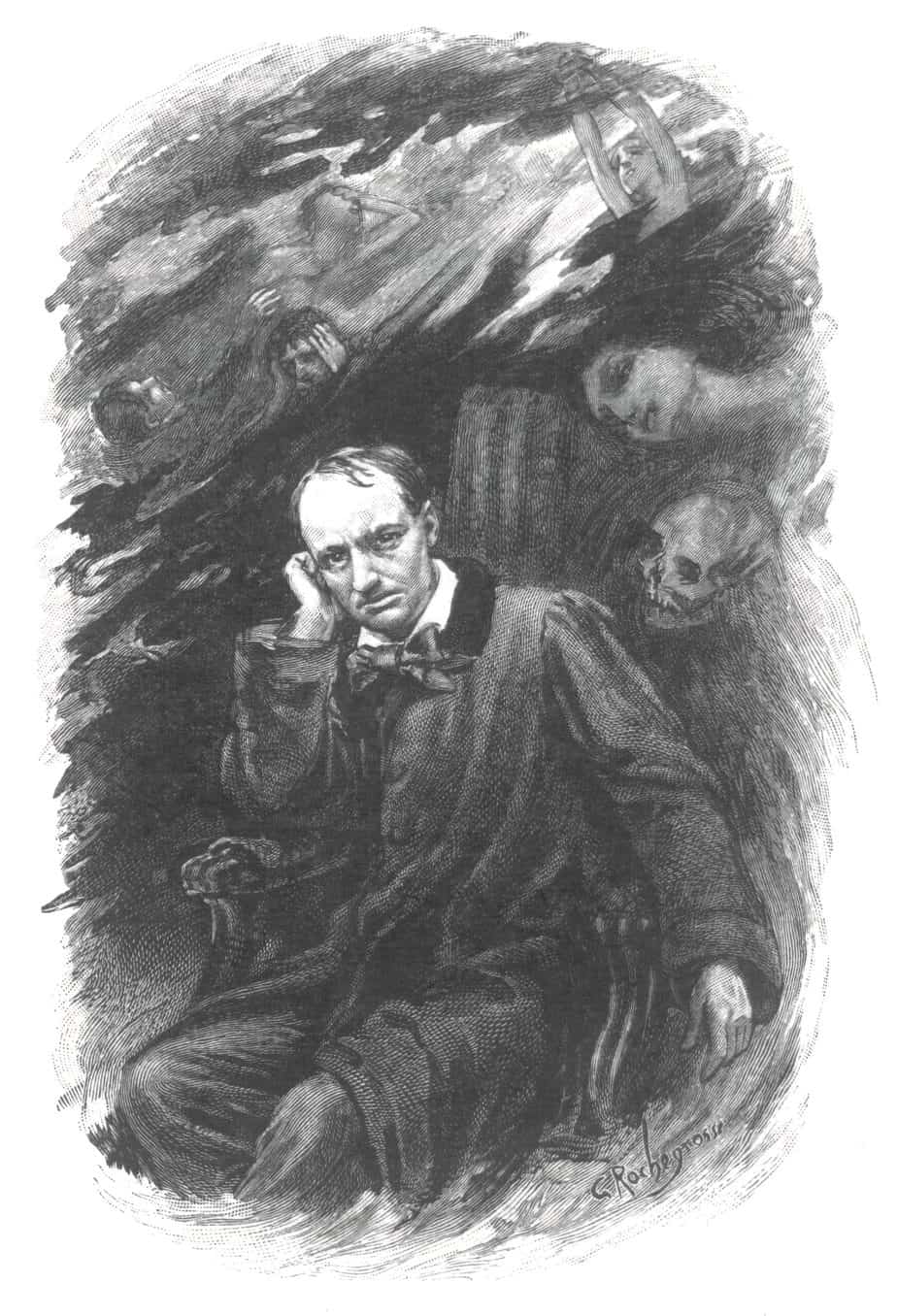
These guys are extroverts who live in the moment and are best suited to city life. However, they interact with a city without ever really being a part of it. They feel themselves to be outsiders.
The flâneur is a wandering narrator who is at once an outsider and native to a particular urban environment.
The flâneur hangs around cities because there’s not so much for him to do in the country. You won’t find Jane Austen’s characters wandering around aimlessly. But these guys aren’t truly aimless: they wander around with the purpose of deconstructing social life in order to form a critique.
Walter Benjamin (1892-1940) drew on the poetry of Baudelaire and created even more flâneurs, bringing the flâneur to the attention of literary critics.
The flâneur was born again. We see an updated flâneur in Rilke’s autobiographical novel The Notebooks of Malte Laurids Briggs by Rainer Maria Rilke (1910), in Nausea by Jean-Paul Sartre (1938) and in Mrs Dalloway by Virginia Woolf (1925).
THE flâneur IS DIFFICULT TO WRITE
If you’re writing a flâneur main character the story will be propelled forward mainly by writerly brilliance. Descriptions must be amazing.
The raison d’etre of the flâneur novel is to allow the writer to have a say about something, so entire novels written in this style tend to become a series of essays and these will vary in quality. The flâneur story is perhaps better suited to short stories.
THE flâneur IS HIGHLY SENSITIVE
James Wood also uses the term ‘overloaded flâneur’. He offers the examples of Salman Rushdie’s novel Fury (2001) and the titular character from Herzog, a 1964 novel by Saul Bellow.
A man goes out to record, with all the writer’s fineness of observation on his side, what the writer would have seen were the writer able to speak autobiographically, like the ‘I’ of a Romantic poem.
The Irresponsible Self: On Laughter and the Novel
This ‘too-porous scout’ suffers from sensory overload. He suffers because of his sensitivity. He has also lost his way.
The old maps have gone, and the new signs are unreadable; and so the modern flâneur is driven mad by the indecipherable abundance of contemporary signification.
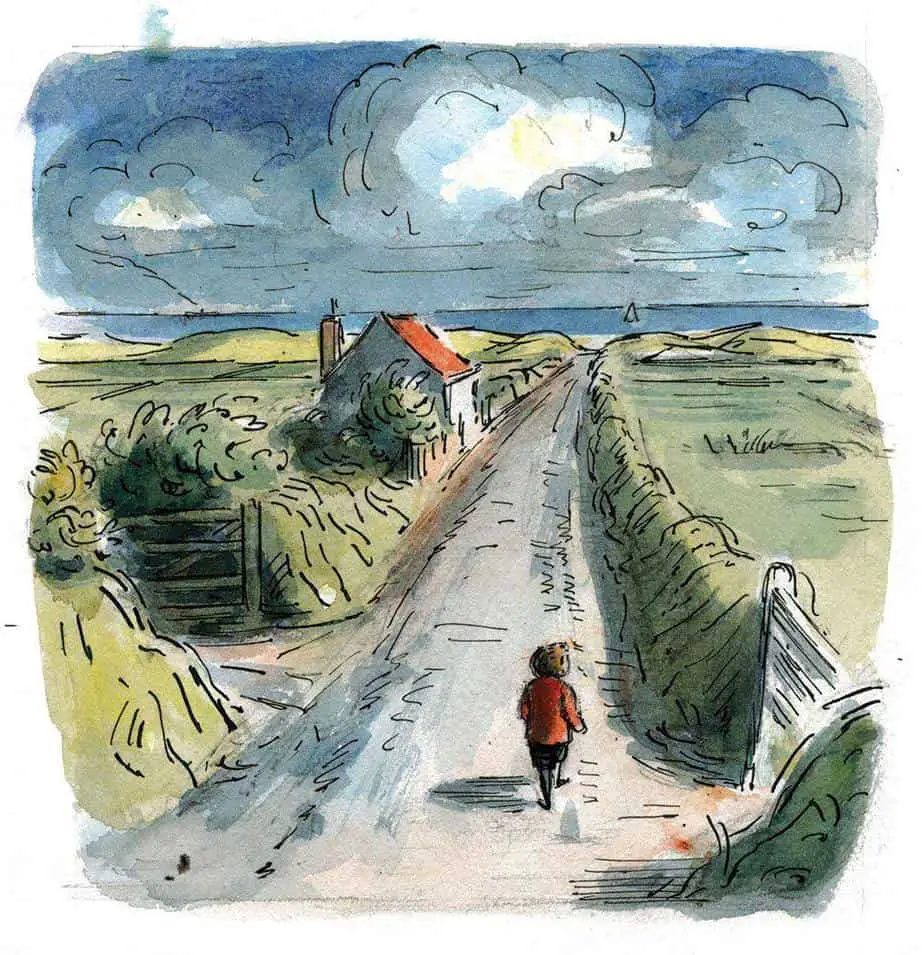
THE flâneur AND PSYCHOGEOGRAPHY
Psychogeography, as you probably worked out, combines psychology and geography. It describes how an environment impacts a person’s behaviours or emotions.
Imagine going for a stroll, unencumbered by a phone, preoccupied by the glories of the world around you: the perfume of blossoming flowers, the heat radiating from sidewalks, the sound of wind as it moves through and bounces off towering buildings. You might notice a historical landmark you usually miss in the hustle of getting from A to B. Or spot the construction of luxury apartments where working-class housing formerly stood. Perhaps you realize there are fewer bird calls than there used to be. Consciously or not, you are participating in the practice of psychogeography, a radical method of moving through the world more intentionally, in a way that benefits not only the individual but society as a whole.
Walkers in the City—and Everywhere: In psychogeography, the journey is key. Each step a person takes helps them reshape and better understand the role the space around them plays in their life. JStor Daily
The flâneur is a perfect example of someone who goes on “an exploratory, destinationless wander through city streets, detecting and mapping ambiences” as described by Phil Smith in Cultural Geographies.
THE FLANEUR IN CHILDREN’S LITERATURE
Middle Grade Novels
Since the flâneur loves busy, interesting cities like New York, some critics have made a subcategory of American children’s literature set in New York where we might find the children’s literature version of the flâneur . Eric L. Tribunella finds the flâneur in:
- The Saturdays by Elizabeth Enright (1941)
- Harriet the Spy by Louise Fitzhugh (1964)
- From the Mixed-up Files of Mrs. Basil E. Frankweiler by E.L. Konigsburg (1967)
- The Planet of Junior Brown by Virginia Hamilton (1971)
Although Tribunella published that paper in 2010, he cites examples from the Second Golden Age of Children’s Literature, which started after WW2 and ended around 1970.
Picture Books
Do modern young audiences have any time for the flâneur? When it comes to picture books, there is a subcategory designed to take the reader through a city, as an armchair tourist. Some critics have said that this is the picture book version of the flâneur, in which the reader is the flâneur, not necessarily a character inside the story. Again, look out for American picture books, particularly those set in New York or Los Angeles.
Young Adult Novels
In modern teen fiction, consider the mall instead of the city as a place where young flâneur hang out.
In stories where teens hang out in malls — and often in real life too — teens are not welcome. The mall has the feeling of a safe, cloistered space and mall designers go out of their way to make shoppers feel as comfortable as if they were at home: modern malls are carpeted and warm and play calming music. Comfortable big furniture is provided as islands of refuge. Yet when teenagers congregate in malls they are not genuinely welcome unless they happen to have the disposable income of adults. Therefore, the mall in young adult literature is a setting which functions as a symbol of teenage-hood itself: that liminal space between childhood and adulthood.
THE POSTMODERN FLANEUR
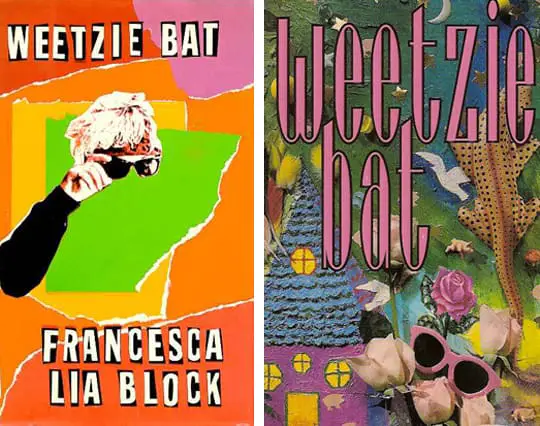
Weetzie-Bat (1989), the debut punk-rock fairytale novel by Francesca Lia Block features a narrator who is both part of her urban environment but also narrates as if she’s an outsider. This archetype has been called a post-modern flâneur.
By this interpretation, the flâneur in children’s literature is unlikely to go away, since the entire category of young adult literature makes heavy use of that feeling of being an outsider trying to find your place.
AVOID WRITING ACCIDENTAL FLANEURS
[W]hen I first started writing fiction in my late teens it didn’t occur to me that there was no plot in them and people just wandered around. I literally had these little “plot” cards for when I got tired of the people just sitting around and talking, and they were stuff like, “The cart falls off a cliff,” and “someone dies.” Sure, those are things that happen, but they are not character-driven plot.
Kameron Hurley, on her own writing evolution
RELATED WORD
Coddiwomple: To travel purposefully toward an as-yet-unknown destination. (English slang)
FURTHER FLANEURS
- For more examples of young adult novels with a flâneur quality, see The Flâneur Goes To The Mall at The Millions
- A variation on the flâneur archetype in storytelling is the Sunday Wanderer. This is a character who wanders around leisurely making observations about their surroundings. It comes from an earlier era in Judeo-Christian countries when Sundays really were for doing nothing. But the Sunday Wanderer doesn’t have to be wandering on a Sunday. In literature, Katherine Mansfield’s Miss Brill is an excellent example of the Sunday Wanderer. Unlike the flâneur, The Sunday Wanderer is neither associated with masculinity nor urban settings.
WHAT IS THE DIFFERENCE BETWEEN A FLANEUR AND A DANDY?
If we stick to Baudelaire’s depictions, the dandy is sort of the introverted version of a flâneur. Dandies don’t enjoy being in the limelight. They groom nicely because they are self-conscious about how they come across to others, not because they wish to be noticed.
However, in actual usage, speakers and writers don’t necessarily draw a distinction between a flâneur and a dandy. Take the 1821 publication The dandy’s perambulations: embellished with sixteen caricature engravings by Robert Cruickshank. Decide for yourself if he describes a flâneur or a dandy by Baudelaire’s definition.

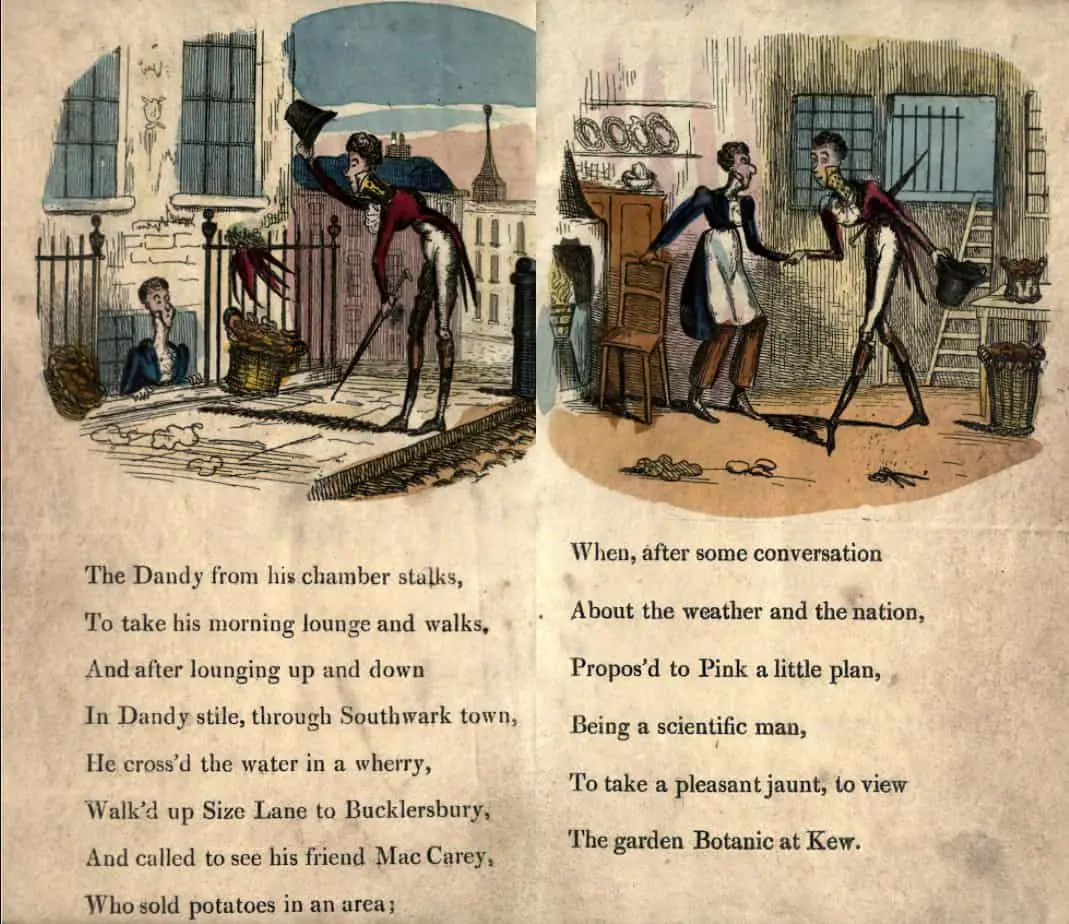
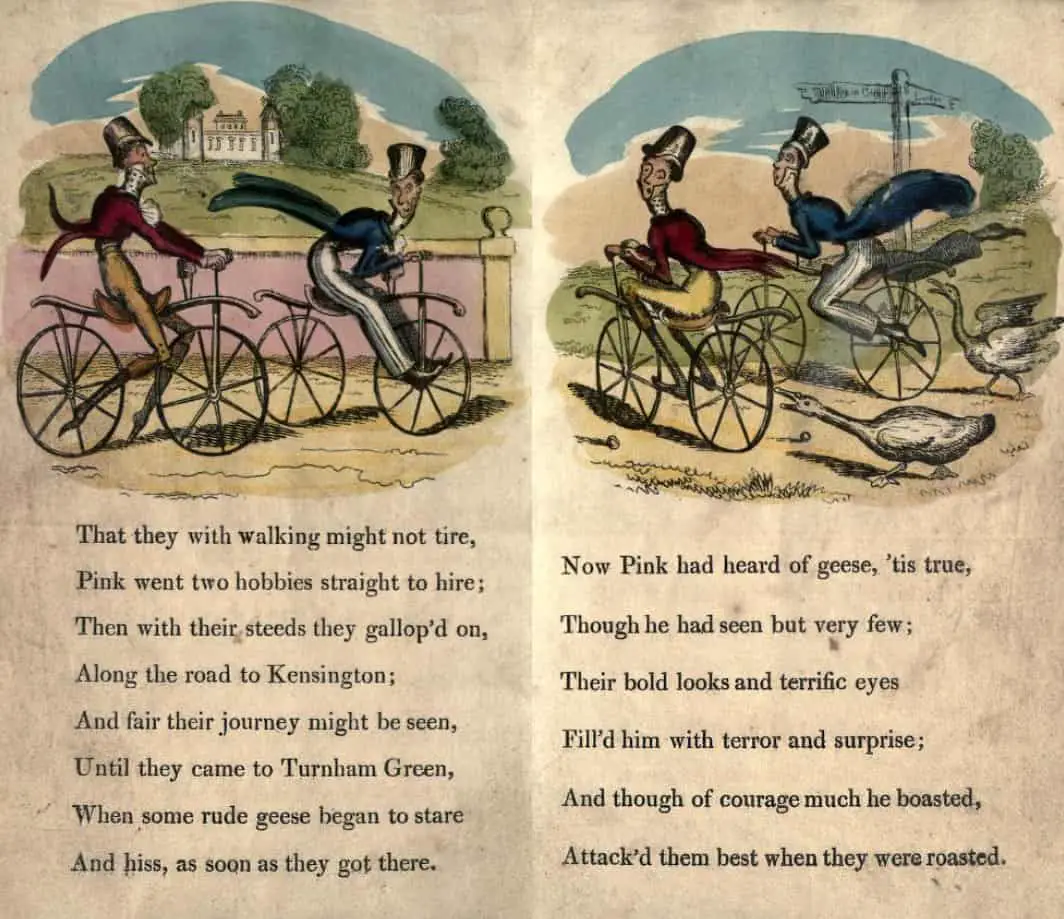
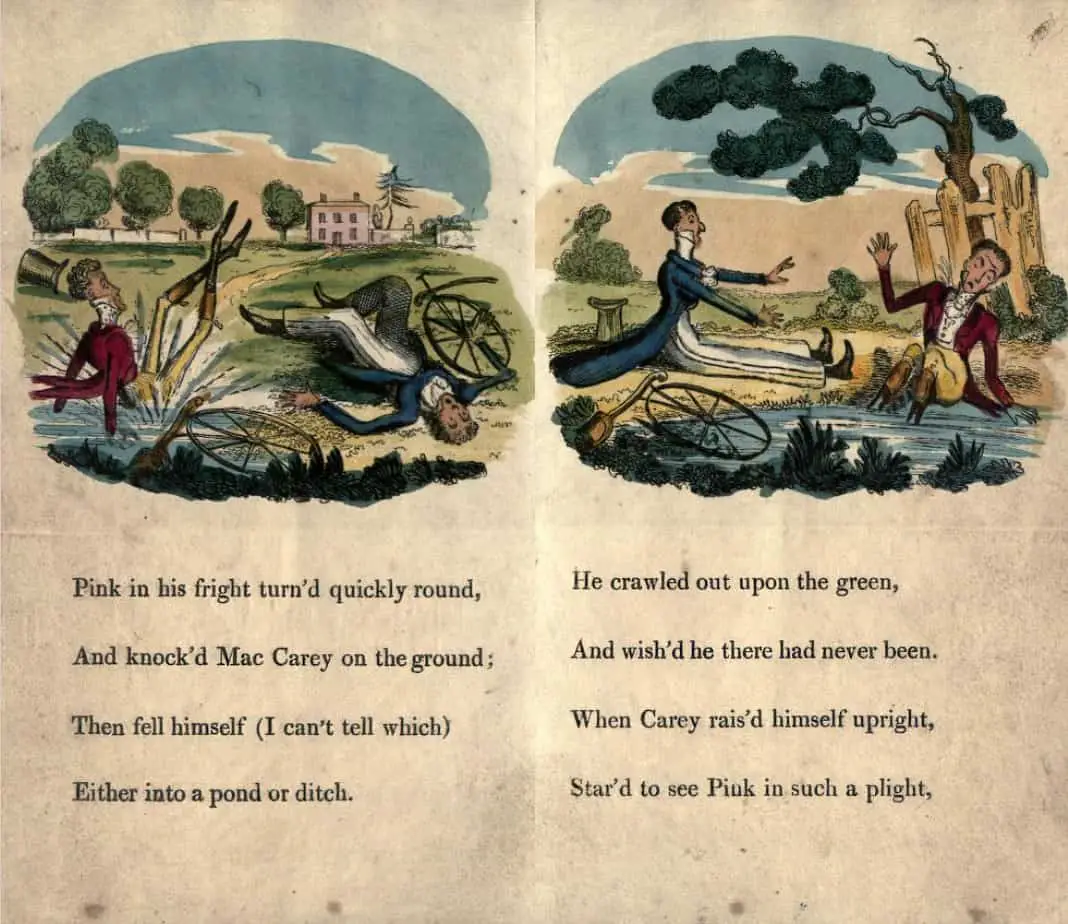
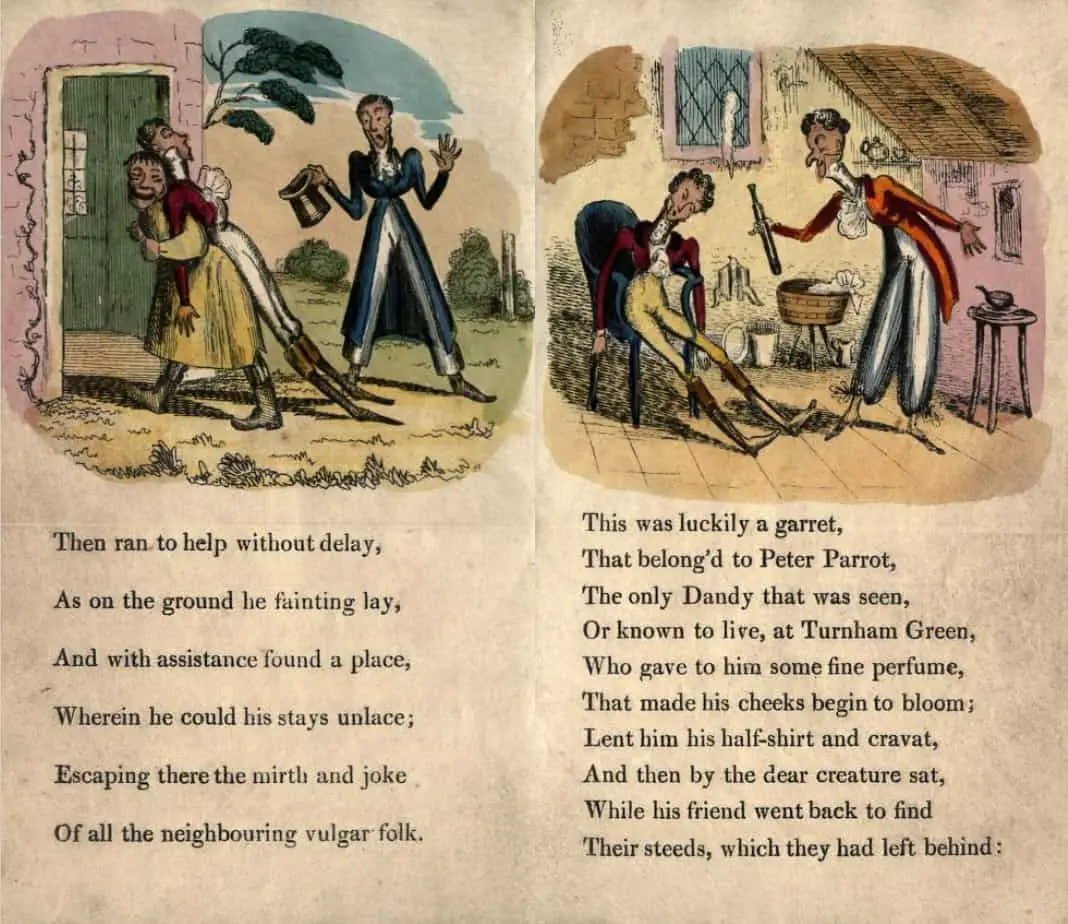
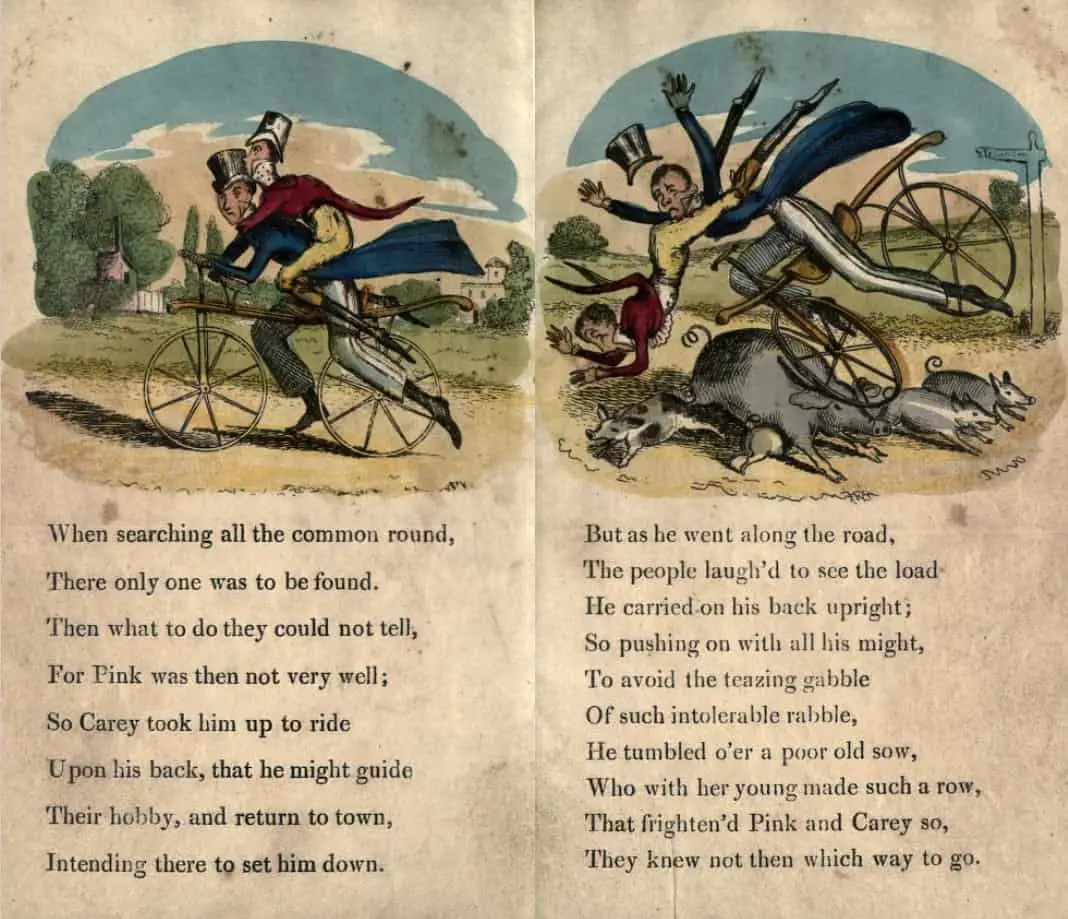
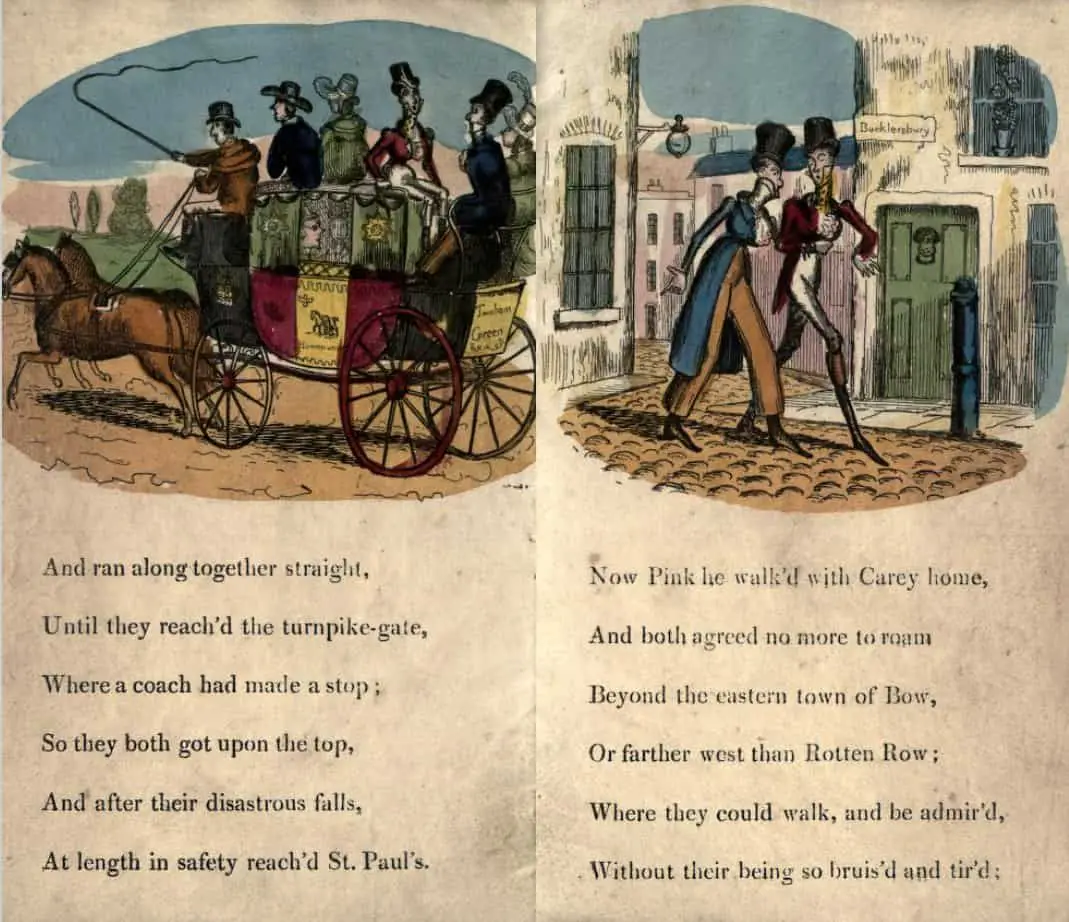
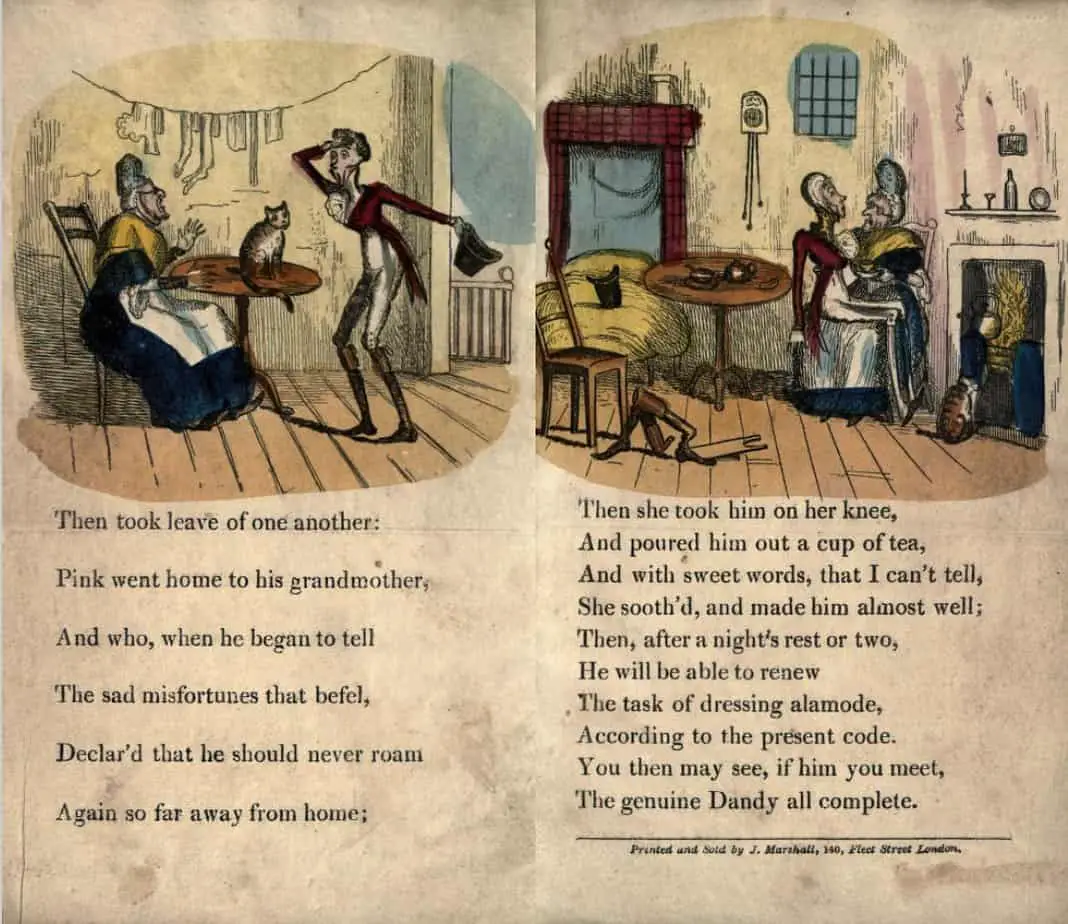
Header painting: Atkinson Grimshaw – Tree Shadows on the Park Wall, Roundhay Park, Leeds
